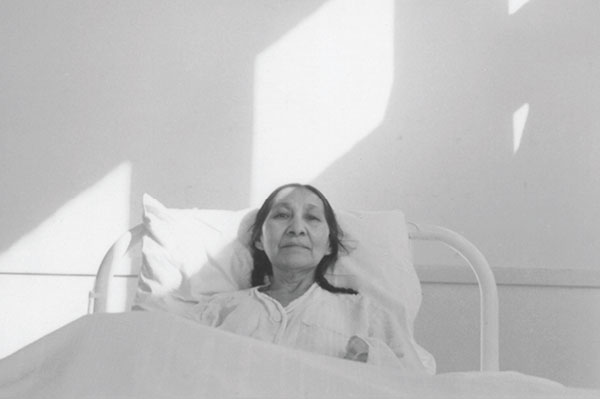Managing Madness

Managing Madness: Weyburn Mental Hospital and the Transformation of Psychiatric Care in Canada
by Erika Dyck and Alex Deighton
University of Manitoba Press, 343 pages, $27.95
During the prairie drought of the 1880s, when a North West Mounted Police officer was sent to apprehend William H. based on complaints and letters from his neighbours about his “unbalanced” mental state, the officer noted that he considered the man to be “a very undesirable type of settler.”
After time in a holding centre, the prisoner — without any charges laid — was sent to the Stony Mountain penitentiary in Manitoba. Years later, he was passed along to the hospital for the insane that opened in 1914 in North Battleford, Saskatchewan.
When that institution was full to capacity, he was sent to the same province’s Weyburn Mental Hospital, built in 1921 as the largest — and ultimately the last — of its kind in the British Commonwealth. It was there that he finally died, after fifty-six years in the hospital and prison systems.
The story of fictional patient William H. introduces Erika Dyck and Alex Deighton’s book Managing Madness. Assembled from primary historical documents, the case is entirely plausible and is typical of inmates who lived and died at Weyburn.
The asylum as an institution is now history. The imposing mental hospitals, usually situated at the edges of mid-sized North American cities and towns, have been dismantled or, in rare cases, refurbished for other uses. But these institutions once haunted the Canadian prairies and seized the moral imagination of surrounding residents.
Originating in Europe, the asylum model represented a “beacon of order and a monument to civilization,” as Dyck and Deighton write.
In Canada asylums were also a “nation-building project” that stood for fealty to (and assimilation into) British ideals and values. Though prairie asylums invoked boosterism and civic pride for their economic benefits and impressive architecture, eventually those views were overtaken by chagrin at the appalling conditions brought about by political neglect and severe overcrowding.
Managing Madness deftly weaves a number of real-life stories with an overview of their wider social context. This context included colonization, paternalistic imperialism, local and national political and economic circumstances, the legal governance and medical understanding of what we now call mental illness, and community attitudes towards people considered insane, dangerous, or suspect. As Dyck and Deighton point out, others decided their fates.
Initially, they write, “the decision to commit someone to an institution was a legal one,” and it was only later that the medical professions were granted authority on the matter.
Health care tactics shifted after the First World War, with the return of previously fit young men suffering from shell shock; but psychiatric advances and enthusiasm for new methods were sidelined during the Great Depression.
From the late 1920s and leading up to the Second World War, the rise of eugenics — the so-called science of improving human populations through selective breeding — included discussions about sterilization and increased the stigma surrounding supposed “mental defectives.”
The book compares actual 1930s cases that illustrate some of the social tensions. In one instance, a fifteen-year-old boy with a low IQ was charged with theft and then committed to Weyburn over the objections of his family, neighbours, and acquaintances.
In another case, after serving a three-month jail sentence, a farmer who had burned down the house of his wife’s alleged lover was again apprehended because of an accusation of insanity by the man whose house he’d destroyed. The farmer was then committed to the Weyburn Mental Hospital for another three months, despite a petition organized by his wife and signed by neighbours and friends that attested to his good character and stable mental state.
It’s telling that individuals suffering from mental illness weren’t legally considered fully human until 1982, when the Canadian Charter of Rights and Freedoms declared that all individuals, including those with mental disabilities, should be considered equal and be treated without discrimination.
Between the 1960s and the 1980s, patients from Weyburn were moved out of the institution and into community-based programs. Yet community integration had its own problems, Dyck and Deighton note. Weyburn, and the asylums in general, had provided jobs, even vocations, for many along with welcome shelter and succour for some residents.
Managing Madness provides a fascinating and nuanced look at the transformation of psychiatric care in Canadian history. As Dyck and Deighton contend, the asylum’s legacy is complex, casting a long shadow over the present and perhaps still affecting social attitudes.
The poignant stories their book tells, based on a wealth of documentation and intensive research, are among its many strengths.
We hope you’ll help us continue to share fascinating stories about Canada’s past by making a donation to Canada’s History Society today.
We highlight our nation’s diverse past by telling stories that illuminate the people, places, and events that unite us as Canadians, and by making those stories accessible to everyone through our free online content.
We are a registered charity that depends on contributions from readers like you to share inspiring and informative stories with students and citizens of all ages — award-winning stories written by Canada’s top historians, authors, journalists, and history enthusiasts.
Any amount helps, or better yet, start a monthly donation today. Your support makes all the difference. Thank you!
Themes associated with this article
Advertisement
You might also like...

Our online store carries a variety of popular gifts for the history lover or Canadiana enthusiast in your life, including silk ties, dress socks, warm mitts and more!









